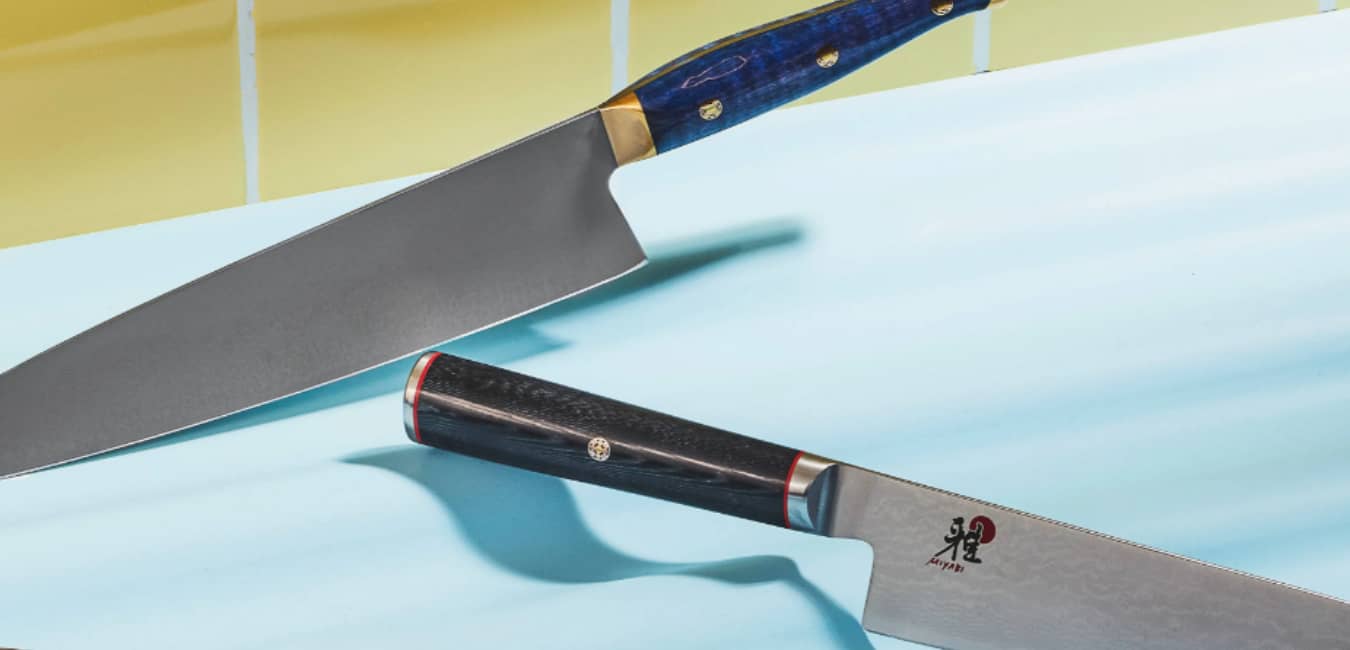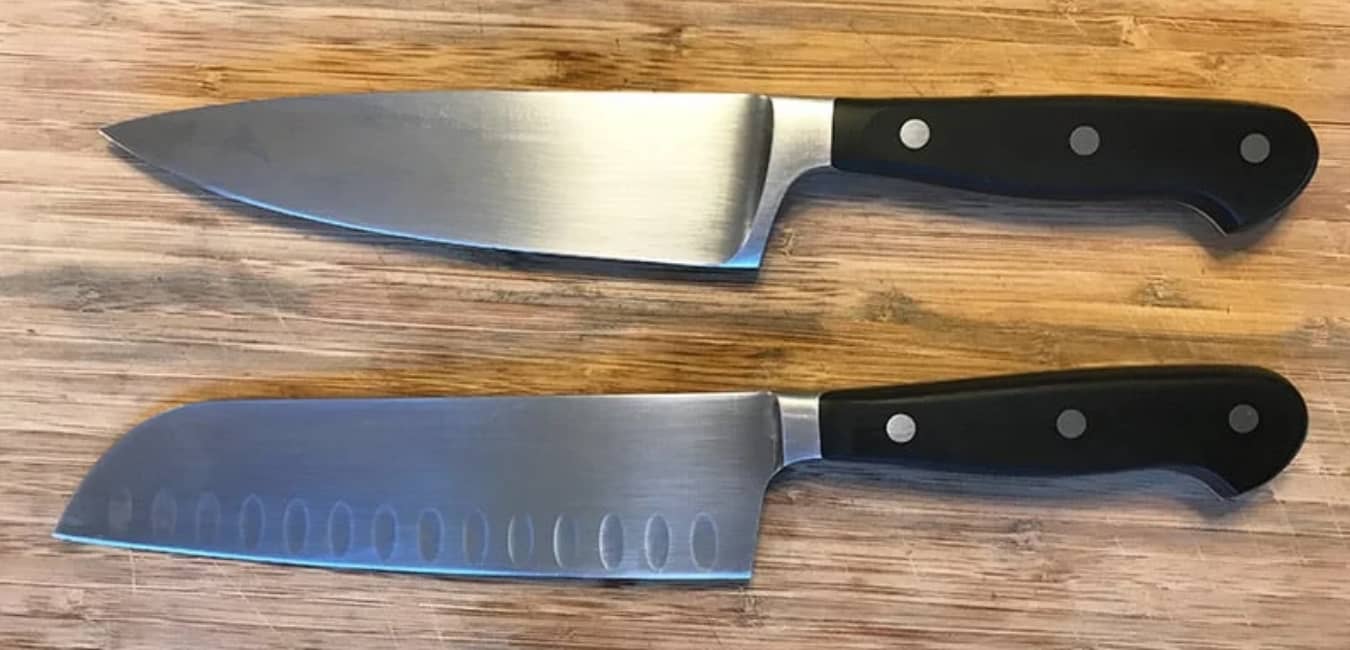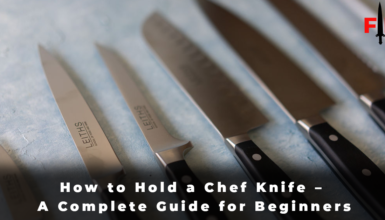When talking about a chef’s knife, it is not necessarily meant only for chefs. It’s called a chef’s knife because it is designed by keeping the job of a chef in mind, that is, quick cutting and chopping within seconds and that too, neatly. A chef won’t have time and tolerance for a knife that doesn’t specifically suit his tasks!
Chef’s knives, in short, are multipurpose knives that are extremely sharp yet sturdy and get you the kitchen tasks done in minutes, whether you’re a professional chef or just a cook at your own home. Using a chef’s knife, you can cut, chop, mince, and perform all other kitchen tasks pretty much easily as compared to that ordinary kitchen knives.
But what matters the most is, how to choose a chef’s knife? You can’t just go to a store and buy one without even knowing what you need. Choosing a good-quality chef’s knife requires an observation. You’ll have to look at what length feels comfortable in your hand, as they come in different blade lengths.
Also, consider the sharpness, its manufacturer brand, and the material too. Furthermore, with their increasing popularity, there are now different chef knife styles available, so you’ll have to look for one that suits your work type and feels good to hold in your hand. Continue reading this article for a complete guide on how to pick a chef’s knife.
Table of Contents
What Makes a Good Chef Knife?
A good chef knife isn’t defined by one factor only. There are many factors that combine to make up a good chef’s knife. Let’s discuss them further in detail.
- Sharpness right out of the box
- Perfect balance and weight
- Size and Handle that Feels Comfortable
- Durable and sturdy material
1. Sharpness Right Out of the Box
Sharpness is the first thing that plays a great role in making a chef knife and actually a ‘good chef knife’. It shouldn’t be dull at all. On your purchase, it should come super sharp right out of the box, so you’ll check its sharpness right away and know if it’s going to work for you.
Sharpness isn’t only important because it would cut fast and quick, but also because dull knives could be really dangerous along with being completely useless. You might end up with a chipped blade of a chef’s knife while cutting some vegetables or meat if the knife was dull. And you might end up getting hurt too.
So, a good chef’s knife has to come with a suitable sharpness for a smooth start.

2. Perfect Balance and Weight
If a chef’s knife fails to provide a perfect balance and weight, it can’t be the best choice. The perfect weight of the knife is identified if it feels neither too light nor too heavy in your hand. But, according to our personal experience, we recommend buying a knife that feels a little bit heavy in your hands, so you’ll have a better grip on it. A lighter knife won’t be that handy.
Now, you must be wondering how do you know if the knife is perfectly balanced? The answer is, when you hold the knife with the tip of the blade downwards or touch a surface, there must feel a balance between the blade and its handle. The weight should NOT be directed entirely towards the blade. If it doesn’t, it isn’t nicely balanced.
3. Size and Handle that Feels Comfortable
According to most kitchen owners, the size of a chef’s knife that works perfectly for all tasks is 8-inch. The choice may differ according to the job you’ll need a chef’s knife for. But the right size for you is going to be the one that suits your needs and doesn’t make your hand feel tired.
If you’re dealing with large pieces of meat, you might want a 10-inch blade for maximum ease. And if you need a chef knife for a lighter and smaller task, such as peeling or cutting some fruit, a 6-inch blade would also work great for you. So, the definition of a good chef knife in terms of its size could vary from person to person.
Coming towards the handle of the knife, it must be non-slippery and should provide the perfect grip and comfort even if you have to use it for hours. A good chef’s knife won’t compromise on its handle because that’s where you get the whole control of the knife.
4. Durable and Sturdy Material
A good chef’s knife won’t become dull quickly, neither will it break or chip or bend. It should have a sturdy build that would provide control over the knife and must be made of a material that is resistant to rust and corrosion.

What Does a Chef’s Knife Do?
A chef’s knife simply lets you get various kitchen tasks done in a perfect way! Chef knives are multipurpose knives for cutting chopping and mincing vegetables, fruits, and meat. They’re designed to be super sharp and handy and so, perform their job well within seconds.
Just because they’re called chef knives, they’re not only for chefs. If you’re a cook at your home and spend most of your time doing cutting and chopping, a chef’s knife is a MUST have in your kitchen! It is definitely going to be your go-to knife for cutting literally anything.
Cook’s Knife Vs Chef’s Knife
There aren’t many differences when it comes to a cook’s knife and a chef’s knife. In fact, according to many people, they’re actually the same thing! Both of them are used by cooks and chefs for multiple kitchen tasks such as cutting vegetables, meat, and other stuff.
So generally, they’re both the general-utility knives for most of the chefs and cooks for professional as well as home use.

CHEF’S KNIFE – A chef’s knife’s steel has a great deal to do with its performance. It is important to note that they are much heavier than conventional knives in the market since they are reinforced with extra steel, making them appropriate for multipurpose tasks. No matter how much chopping or peeling is done in the kitchen, a chef’s knife won’t let you down in terms of durability. They are built to last long and will outlast anything else.
Further, you can tell a lot about the ease of using a chef’s knife by its length. Chefs tend to favor knives with a length of about 20 centimeters, which is what marks these knives out from other knives. In addition, the blade height is approximately 4-5 centimeters tall, which gives you ample room to hold your ingredients while you multitask. In fact, this adds even more safety when using a chef’s knife.
COOK’S KNIFE – Cook’s knives are different from chefs’ knives, despite their similarities aesthetically. For instance, the blade features a curve at the tip’s end. It’s something you won’t find on a chef’s knife. This curve does serve a purpose, but it can sometimes be a distraction, especially when cutting fibrous materials. You can get slowed down or even lose precision if you get caught by it.
Cook’s knives are lighter because they contain less steel, which makes them less durable because they wear out with each sharpening process. Therefore, it is not surprising that they are also priced lower than chefs’ knives. Their length may also be considerably shorter than that of Chefs.
So, yes, both knives appear similar, but they differ in shape, size, and quality.
How to Choose a Chef’s Knife – FAQs
Conclusion
The moment you hold a chef’s knife, you should immediately be able to feel its fit. It should feel like it was made for you. Your confidence should not be threatened, rather you should feel at ease. Take a step back if the knife feels wrong in any way. Otherwise, go ahead and chop!



